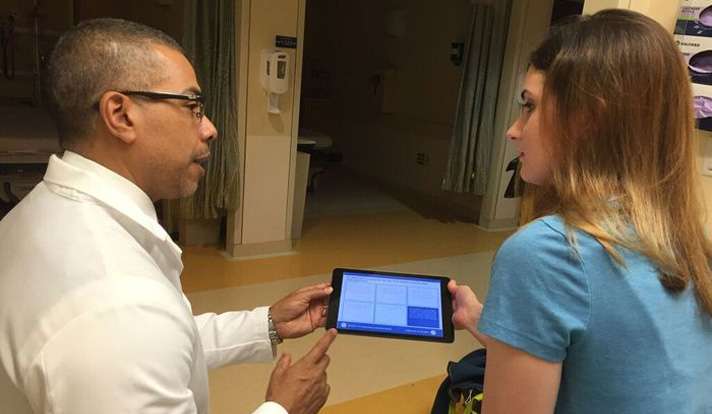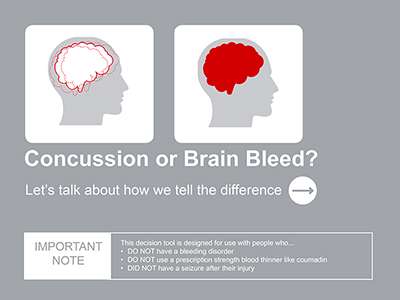Can better tech improve doctor-patient conversations? A case study with CAT scans in the ER

A Yale-led team of researchers have developed an electronic application tool that puts patients at the center of a decision about an overused medical test: the CAT or CT scan. If it pans out in wider pilot testing, the innovative app could inform the way that health technology tools are developed and used by physicians and patients, said lead author Dr. Ted Melnick.
CT scans are routinely ordered for patients who visit the emergency department with mild head injuries. However, the test is often unnecessary. While many doctors are provided guidance, such as alerts and reminders, to help them make decisions about tests like CT, they don't always use the tools, which are viewed as burdensome.
To address this problem, Melnick and his co-authors decided to develop a different tool utilizing a process often applied in the tech industry: user experience testing. Instead of introducing a fully developed tool to doctors, they first tested a prototype app with the "end users"—patients, emergency department clinicians, researchers, and designers.
Through several rounds of testing and retooling, they settled on a version of the app they called Concussion or Brain Bleed. Unlike other decision-support tools for doctors, the Concussion app is designed to be used by both doctor and patient. Rather than providing the clinician with an answer or script, the app provides cues and prompts to facilitate doctor-patient communication.
How it works: The tool categorizes head injuries as low, medium, or high risk, based on a short list of criteria for each. Depending on the degree of risk, the app offers a risk "visualization" showing how many patients out of 100 would benefit from a scan based on research. Next, a "risk discussion" screen offers questions—like, "What are you most concerned about?"—to facilitate conversation.

"The tool and technology is a starting point," said Melnick, who is an assistant professor of emergency medicine. "It offers some cues and ideas to guide the conversation, which is about sitting down with the patient and educating them in terms of different types of head injury."
Through the conversation, doctors can explain to patients what CT scans are actually designed to do—detect bleeding in the brain, but not concussions—and ideally come to a shared, evidence-based decision about the test, the researchers noted.
The Concussion or Brain Bleed app is designed to be viewed on a tablet device, which is less imposing than a computer and can be readily viewed by doctor and patient. More important, the tool creates the opportunity for a discussion, Melnick said. "It creates the time and space to engage and talk with patients within the emergency department's constraints."
Melnick and his co-authors are conducting further pilot tests of the app and plan to expand testing to a larger group of doctors and facilities. They will continue to gather feedback and refine the tool, he said, with the goal of doing a large-scale implementation trial.
The study was published in the Journal of Medical Internet Research.
More information: Edward R Melnick et al. Patient-Centered Decision Support: Formative Usability Evaluation of Integrated Clinical Decision Support With a Patient Decision Aid for Minor Head Injury in the Emergency Department, Journal of Medical Internet Research (2017). DOI: 10.2196/jmir.7846
















